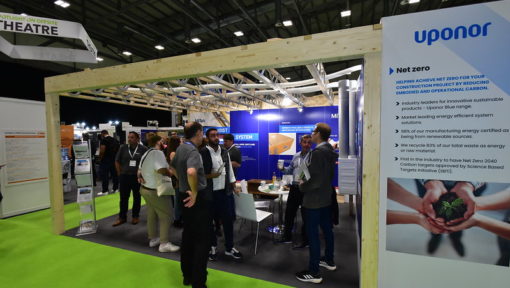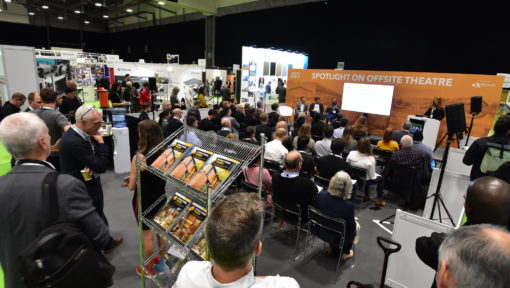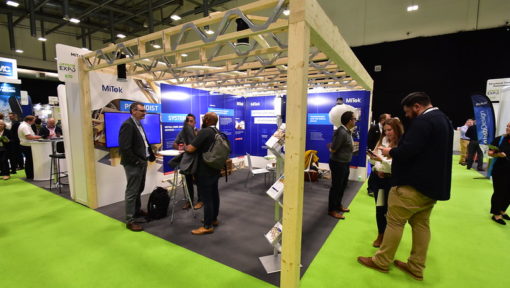This year, MiTek UK and Ireland attended Offsite Expo – a unique event that aims to bring together those who are driving forward change in the construction industry. Here, Jimmy Close, business development director at MiTek, discusses the key takeaways from his panel discussion on Digital Construction.
In recent years we’ve heard a lot about how digital construction is changing the built environment, not least its role in the journey to net zero. But construction has been criticised for its slow adoption; and it’s estimated to be way down the league table as a sector, just in front of farming and agricultural. Whilst we’ve still come a long way since then, there’s still work to be done with the uptake of using digital tools throughout the whole construction process.
Digital technology provides the opportunity to overcome low productivity, high costs and project over-run problems. So, what is stopping us?
Speaking alongside Alex Small from Tata Steel, and Autodesk’s Azim Jasat, we got to the heart of some of the greatest barriers during our discussion. The panel was the perfect opportunity to dive into topics and challenges that the industry currently faces and explore what we can all do to ensure a successful future in Offsite Construction.
One predominant takeaway is the importance of collaboration. There are plenty of excellent examples of digital implementation in the sector, but these tend to be happening in isolation. What’s clear is that it will take the entire industry working together to ensure the best methods of construction, materials and sustainable methods are being used.
With the Future Homes Standard just round the corner, and design and manufacturing intrinsically linked, there is still work to be done. Whether it’s challenges like material traceability, synchronicity of design, or integrating existing systems, it’s important we have open and honest discussions that enable us to move forward together
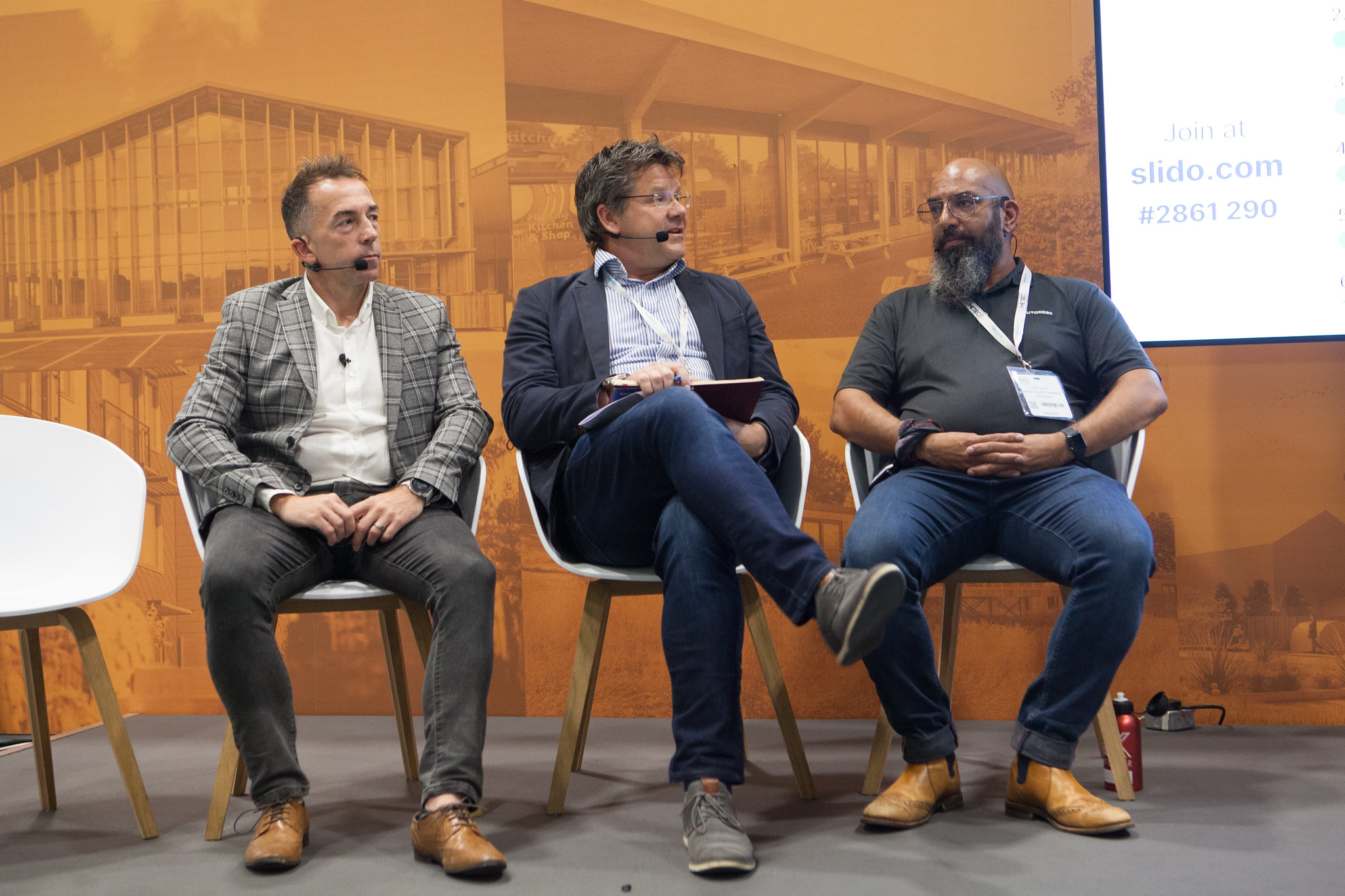
Integrating Manufacturing and Design
One of the issues highlighted during the panel is the importance of design synchronisation. We all need to work together to ensure changes made during the design process, are reflected in manufacturing.
We know that in the past, the world of AEC and the world of manufacturing haven’t always been the best at communicating. This has meant that, sometimes, managing building scale data and product scale data hasn’t been easy.
One way to tackle this is by integrating software – so that changes at the start of the workflow are as accurate as they can be when reaching the manufacturing stage.
Early collaboration is another factor that can help us minimise challenges, and digital tools can support this.
Standardisation of Digital Catalogues
In the past, digital catalogues have largely been built in isolation. This makes it challenging to compare information and make informed decisions.
We all have our own product data, but as an industry we need to decide what the purpose of all the data is. There needs to be a standard on what we produce, and why we’re producing it.
Whilst the industry really wants to move forward with standardisation, it’s a huge step to take.
Some housebuilders are beginning to take steps already and integrating offsite construction. Companies want to remain individual too, so standardised data sets allow us to work together better.
We need a balance between the standardisation of production, and what the end product for the consumer is going to look like. Even if you’ve got a standard product, standard assemblies and you’re weaving those into the design of a building, the building doesn’t have to appear or function as a standard uniform building. There is still flexibility in that design.
Maybe unique product identification is the direction we head in, but, for now – the industry needs to be able to link objects in 3D CAD to the objects we’ve delivered and ordered, and that they can be mapped back through certification. Ideally there needs to be something that can link all of the data together.
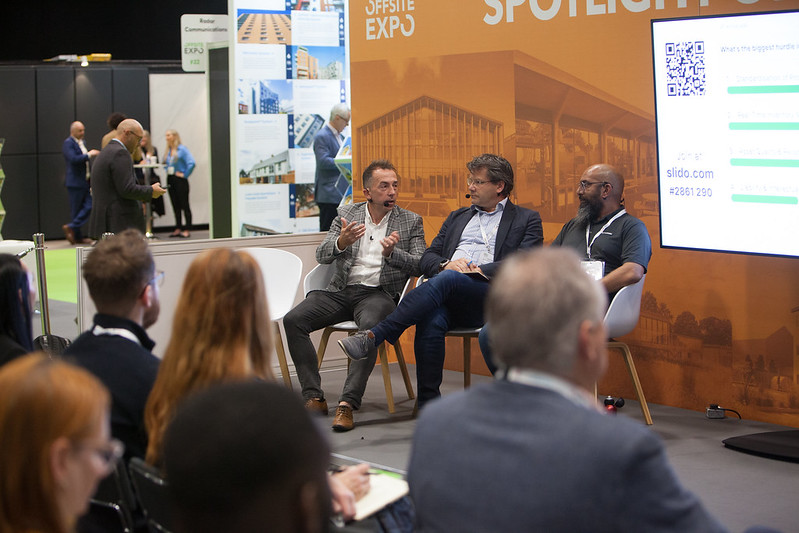
The Design Process & Design Optimisation
There’s a lot of room for education around Design optimisation. For example, you might see a designer in the UK drawing a timber frame structure, and their modelling it from an architectural masonry drawing. We need to educate from the architectural level all the way through to optimisation.
Another concept discussed was the idea of a ‘Design Freeze’. Designs are often changed, sometimes even when they’ve reached the product manufacturer. Whilst this would be an ideal solution, complete prevention of changes is difficult, as project requirements can constantly evolve.
Digital tools could be the answer. Tools that support collaboration and notify team members could help to reduce disruptions during the design process. Early collaboration is important too, alongside successfully integrating software and systems.
Perhaps the industry working towards a singular platform that can notify us of changes at all stages of the design process, in real time, is the practical solution.
Challenges and Opportunities in Offsite Construction
Supply chain transparency is an important factor in the design process. As suppliers ourselves, we have undertaken EPD’s to provide transparency around our products and their environmental credentials, which supports compliance. One huge factor for Offsite Construction is sustainability, and real time monitoring of building performance and thermal efficiency during the operation of the finished project.
As we move towards more smart technology within our homes – homeowners will have new technology to contend with. Whether it’s battery technology, feeding back into the grid, or apps on our phone that monitor water usage – interacting with our home through technology will become the new normal. There are already some big housebuilders creating concept houses with smart technology and monitoring inside the home, such as Zed House and Energy Home, which we are proud to be supporting.
Software, and digital platforms can help us work, and communicate better. Whether it’s during the design process, or manufacturing process – tools can help us collaborate efficiently.
Whilst the industry has made progress in digitalisation, there is still room for growth, and there needs to be a much wider adoption of digital tools. The tools are already there, it’s making sure we’re using them in the right areas, and at the right points.
Key takeaways:
- Promote early design collaboration throughout the whole supply chain via digital tools
- Software integrations to enhance workflow are as accurate as they can be when reaching the manufacturing stage.
- Notifications and consequences of design changes between supply chain partners (critical path or design freeze options)
- Standardisation of key components to not only address DFM, but DFMA
- Major stakeholders need to integrate and collaborate more openly.
